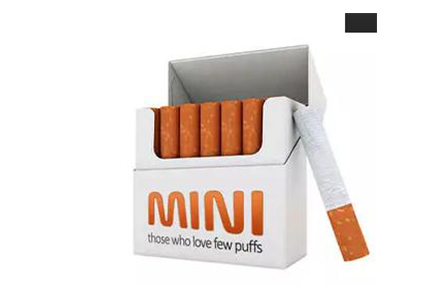When you pick up a pack of cigarettes, have you ever wondered why most contain 20 cigarettes? The world of cigarette packaging is more complex than it seems, influenced by history, regulations, and consumer needs. This guide explores pack sizes, packaging types, and the crucial role of packaging films.
The most common standard pack size globally is 20 cigarettes, adopted by major markets like the United States, European Union, and China. This size became dominant in the early 20th century due to industrial efficiency—fit perfectly in machinery and aligned with consumer purchasing habits.
However, regional variations exist:
Japan: While 20 is standard, 10-cigarette packs ("kuchikomi") are popular for their portability, often sold in convenience stores.
Russia and Eastern Europe: 25-cigarette packs were historically common, though some countries are shifting to 20 due to EU-style regulations.
Middle East: 20-cigarette packs prevail, but premium brands may offer 10 or 12 in luxury packaging.

Beyond the standard, innovative or niche pack sizes cater to specific needs:
Mini Packs (5-10 cigarettes): Target casual smokers or tourists, ideal for short-term use. Examples include "travel packs" in duty-free shops.

Family/ Economy Packs (50-100 cigarettes): Popular in price-sensitive markets, offering cost savings per cigarette. Common in countries like India and parts of Africa.
Collectible/ Limited Edition Packs: Luxury brands may release 10-12-cigarette packs in premium designs, targeting status-conscious consumers.

Machine-Specific Packs: Some countries with vending machine cultures (e.g., Japan) have packs designed for specific dispensing systems, like slim 20-cigarette cases.

Regulatory Policies:
Many countries impose minimum or maximum pack size limits to control consumption. For example, Australia's plain packaging laws focus on 20-cigarette packs to standardize branding restrictions.
High-tax countries may discourage large packs to increase per-pack cost, though this varies by region.
Consumer Demand:
Portability drives demand for smaller packs (e.g., 10 cigarettes for women or on-the-go users).
Price sensitivity leads to larger packs in emerging markets, where consumers prefer lower upfront costs.
Market Strategy:
Premium brands use smaller packs (10-12 cigarettes) to create an exclusive image, while budget brands rely on 20 or 25 to emphasize value.
Limited editions or promotional packs may use non-standard sizes to attract attention.
Production Costs:
Standard 20-cigarette packs offer economies of scale in manufacturing, packaging film usage, and distribution. Non-standard sizes often cost more due to specialized machinery and materials.
1. Soft Packs (Soft Packs): Made of cardboard with a soft foil lining, covered by a packaging film. Lightweight and cost-effective, but less protective against crushing. Popular for budget brands.
2. Hard Packs (Flip-Top Boxes): Sturdy cardboard or plastic-lined boxes with a hinged lid. Provide better protection and a premium feel. Common for mid-to-high-end brands. The packaging film here often includes glossy or matte finishes for branding.
3. Slim/Super Slim Packs: Designed for slimmer cigarette diameters (e.g., 8mm vs. standard 7mm), holding 20 slim cigarettes in a narrower box. Popular in Asia and Europe for a sleek aesthetic.
4. Moisture-Proof Packs: Include additional layers in the packaging film, such as aluminum foil or barrier coatings, to prevent humidity damage. Essential in tropical climates.
5. Eco-Friendly Packs: Use recyclable packaging films (e.g., plant-based BOPP) and sustainable cardboard. Reflect growing consumer demand for environmental responsibility, though still a niche segment.
6. Child-Resistant Packs: Feature special locks or mechanisms in the packaging, often combined with thicker films, to comply with regulations in markets like the U.S. and Canada.
19th Century: Cigarettes were sold loose or in tins, with no standardized packaging. The first commercial paper packs emerged in the 1880s, holding 10-12 cigarettes.
Early 20th Century: Industrialization led to mass production. American Tobacco Company standardized the 20-cigarette pack in 1908, optimizing for machinery and retail display.
Post-WWII: Global adoption of 20-cigarette packs as international trade expanded. Soviet bloc countries favored 25-cigarette packs due to different manufacturing standards.
21st Century: Regulatory pressures (e.g., plain packaging in Australia 2012) and health campaigns led to standardized sizes in many markets. Smaller packs gained traction as smoking rates declined, allowing occasional smokers to buy smaller quantities.
1. Product Protection:
Guards against humidity (which causes mold) and dry air (which damages tobacco texture).
Prevents physical damage from bending or crushing, especially for soft packs.
2. Quality Preservation:
Maintains tobacco moisture content and aroma, critical for consumer satisfaction.
Blocks UV light in some cases, though most films focus on moisture/oxygen barriers.
3. Branding and Communication:
Serves as a canvas for logos, colors, and promotional messages.
Mandatory health warnings (e.g., graphic images in many countries) are printed on or through the film.
4. Regulatory Compliance:
Some films include tactile elements (e.g., embossing for blind warnings) or specific thicknesses to meet legal standards.
Enables standardized packaging required by anti-smoking laws (e.g., plain packaging in Australia uses a specific drab olive film).
5. Anti-Counterfeiting:
Advanced films with security features help brands combat fake products, crucial in markets with high counterfeit rates.
The number of cigarettes in a pack is far from universal. While the 20 - stick pack reigns as the global standard, influenced heavily by taxation and recent public health regulations banning smaller sizes, variations persist. Crucially, the cigarette packaging film, an indispensable yet often invisible component, is crafted using a Blown Film Machine—a piece of equipment vital to producing its sophisticated structure. It's not just shrink wrap; this film, extruded through the precision of a Blown Film Machine, serves as a sophisticated barrier, ensuring freshness, providing tamper evidence, safeguarding against contamination, and acting as the foundation for vital tax and security markings.
Q: Why are 20 cigarettes the most common pack size?
A: It balances consumer convenience (a week's supply for a pack-a-day smoker), manufacturing efficiency, and historical standardization. Most global machinery is designed for 20-cigarette packs, keeping costs low.
Q: Is cigarette packaging film recyclable?
A: Traditional BOPP film is recyclable but requires specialized facilities. Many brands are shifting to eco-friendly films, such as water-based coatings or biodegradable polymers, to improve sustainability.
Q: Can packaging film affect the taste of cigarettes?
A: High-quality films with good barrier properties prevent external odors from affecting tobacco, thus preserving taste. Poor-quality films may allow moisture or oxygen ingress, damaging flavor.